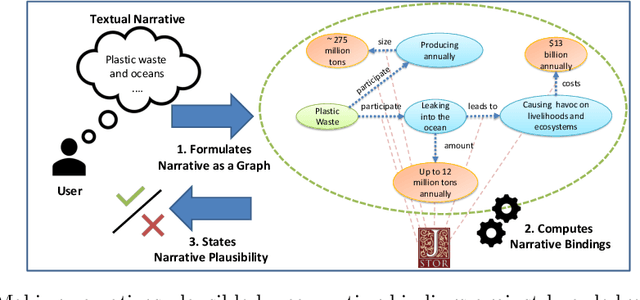Hermann Kroll
On Dimensions of Plausibility for Narrative Information Access to Digital Libraries
Aug 22, 2022
Abstract:Designing keyword-based access paths is a common practice in digital libraries. They are easy to use and accepted by users and come with moderate costs for content providers. However, users usually have to break down the search into pieces if they search for stories of interest that are more complex than searching for a few keywords. After searching for every piece one by one, information must then be reassembled manually. In previous work we recommended narrative information access, i.e., users can precisely state their information needs as graph patterns called narratives. Then a system takes a narrative and searches for evidence for each of its parts. If the whole query, i.e., every part, can be bound against data, the narrative is considered plausible and, thus, the query is answered. But is it as easy as that? In this work we perform case studies to analyze the process of making a given narrative plausible. Therefore, we summarize conceptual problems and challenges to face. Moreover, we contribute a set of dimensions that must be considered when realizing narrative information access in digital libraries.
A Library Perspective on Nearly-Unsupervised Information Extraction Workflows in Digital Libraries
May 02, 2022



Abstract:Information extraction can support novel and effective access paths for digital libraries. Nevertheless, designing reliable extraction workflows can be cost-intensive in practice. On the one hand, suitable extraction methods rely on domain-specific training data. On the other hand, unsupervised and open extraction methods usually produce not-canonicalized extraction results. This paper tackles the question how digital libraries can handle such extractions and if their quality is sufficient in practice. We focus on unsupervised extraction workflows by analyzing them in case studies in the domains of encyclopedias (Wikipedia), pharmacy and political sciences. We report on opportunities and limitations. Finally we discuss best practices for unsupervised extraction workflows.
 Add to Chrome
Add to Chrome Add to Firefox
Add to Firefox Add to Edge
Add to Edge